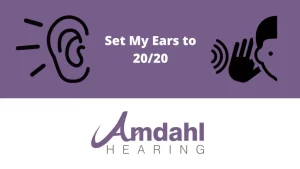Ok, so we’re about to get into the weeds a little bit on this one. But for folks looking to get hearing aids, this is pretty important. A question I’ve received from time to time is “Why aren’t hearing aids like glasses? Can’t you just set me to 20/20?” This is a super fair question. Here is my answer.
Hearing Aid Fitting Formulas
For as long as I’ve been in the industry, even longer, there have been something called Hearing Aid Fitting Formulas. The idea behind these formulas is to prescribe an appropriate amount of power at each frequency depending on the amount of hearing loss. As time has passed, they have also tried to predict how sensitive each person would be and prescribe the amount of gain limiting or compression within the formula so that loud sounds would not become too loud. There are currently 3-5 formulas that are widely used in the industry. Making things even more complicated, many hearing aid manufacturers have created their own proprietary formulas, which can be significantly different from all other.
Which Fitting Formula Should I Use?
So what to do? Which formula is the most correct? In my experience, the answer is none of them. For starters, formulas are designed to be either for maximum audibility (best hearing and understanding) or maximum comfort (less amplification, leading to less ability to understand, but initially more comfortable). Let’s look at each option critically.
Maximum Audibility
This would seem to make the most sense. Set the aids to where patients hear everything the best they can, and let the magic happen. Here’s the issue. We have to remember that the average patient waits 5-10 years to get hearing aids after they need them. Because of this, they are used to a world that is much quieter than reality. Most sounds are simply too sharp, or too loud when they again begin hearing them “normally.” While the usual and customary response from providers is “you’ll need to get used to it,” in my experience, it’s more likely that the patient will return the hearing aids or simply stop wearing them long before they have had a chance to acclimate to the new level of sound.
Maximum Comfort
This is an interesting approach. On one hand, the patient is generally more comfortable with the hearing aids, as the sound is perceived as “more normal or natural.” Generally speaking the patient will be happy leaving the office. The issue here is that while acceptance rates are initially higher, long term satisfaction is sacrificed as the patient will quickly begin to notice deficiencies in their ability to hear and understand.
Fitting formulas are great tools to get a patient to a good starting point, or in other words “in the ballpark.” In the hands of a professional with experience, they will help patients successfully begin a journey toward better hearing. Just understand that the fitting is only the first step in the journey. Successful patients will receive regular follow up care on their way to maximizing their ability to understand. Even after they have received maximum benefit, regular maintenance will be essential to maintaining this optimal level of hearing.
If you have questions about your hearing or hearing aids, please give us a call at 320.252.0094, look us up online at amdahlhearing.com or email me directly at info@amdahlhearing.com
